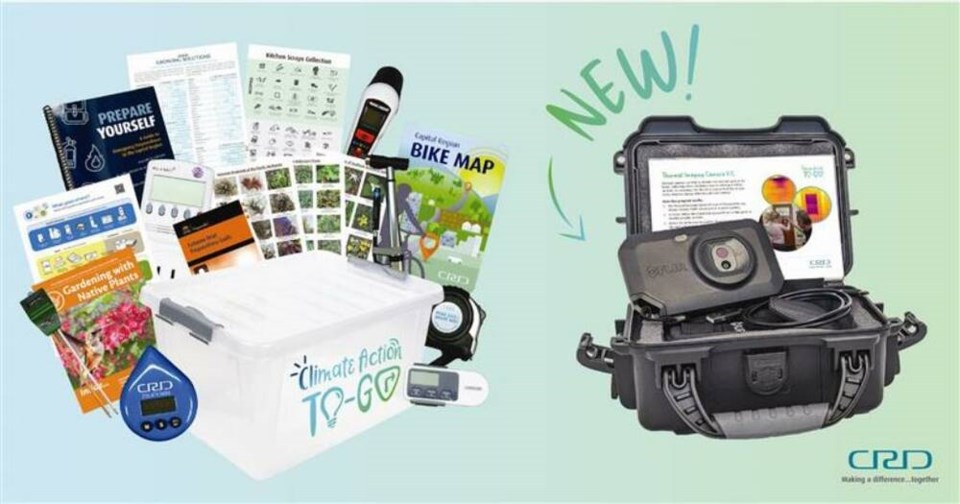Library users can now check out thermal cameras to pinpoint where they’re losing heat in their houses, as part of a Capital Regional District program.
The CRD has acquired 24 cameras that will be available at Greater Victoria Public Library branches, which will have 19; the Sooke and Sidney branches of the Vancouver Island Regional Library, which have three cameras; and the Salt Spring Island Public Library and Southern Gulf Islands Community Libraries, which have one each.
The cameras can help show where there might be drafts, insulation gaps and heat loss through walls — all of which can have a huge impact on energy bills as winter sets in, said Nikki Elliott, manager of CRD climate action programs.
Winter is the best time to use the cameras, since that’s when a 10-degree or greater difference between indoor and outdoor temperatures make it easier for the cameras to identify areas of heat loss, Elliott said.
The camera kits available to check out also contain tips for do-it-yourself draft-proofing and info on the CRD’s Home Energy Navigator program for those planning larger home-energy retrofits.
Depending on the library, the kits can be reserved in person or online for one to three weeks.
Already available Climate Action To-Go Kits, which have been updated, contain other tools and information, allowing people to measure household-appliance electricity use with a special meter, find air leaks around windows with a detector and test shower heads for water efficiency.
There’s also information on how to conduct a household waste audit and how to improve gardens with native plants and drought-tolerant species.
There are 21 updated Climate Action To-Go kits available for loan from the region’s libraries, including two kits at Camosun College’s library. They can also be reserved and checked out for one to three weeks at a time.
Elliott said the kits provide an interactive way for residents to learn about climate change and take action. “These kits include practical tools and activities for reducing household greenhouse gas emissions, especially from sources like transportation, buildings and waste — the region’s largest contributors,” she said.
Elliott said the information helps to prepare homes and communities for current and future climate impacts.
For more information, visit crd.bc.ca/actionkits
>>> To comment on this article, write a letter to the editor: [email protected]



